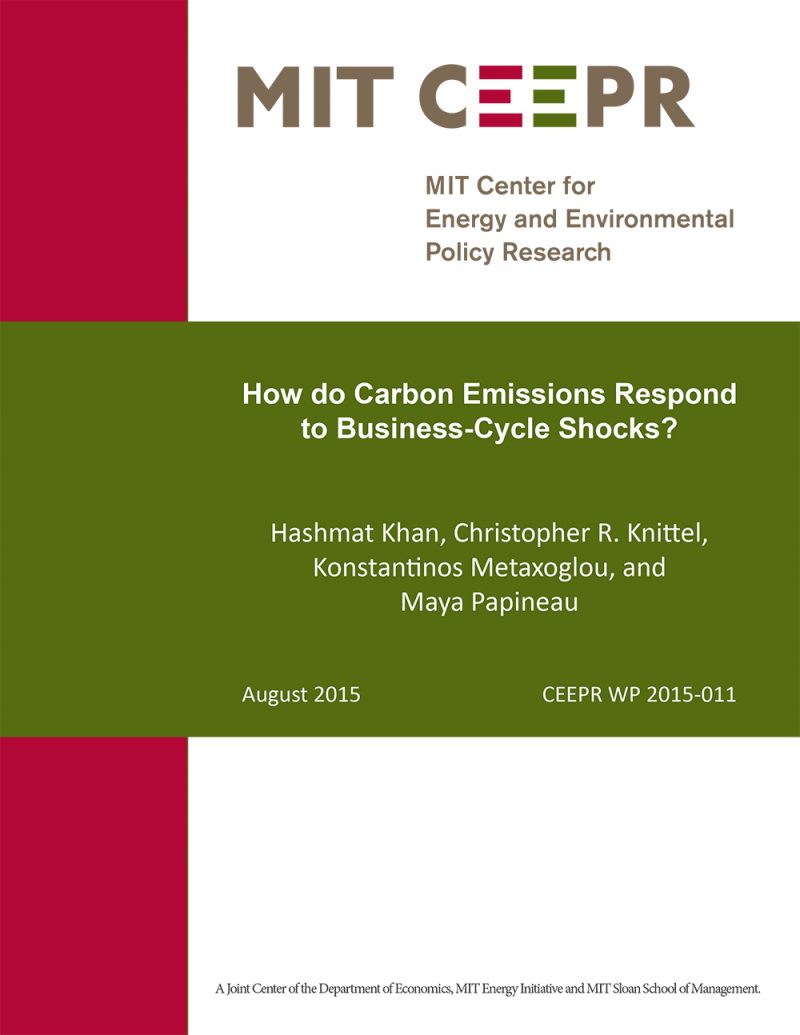How do Carbon Emissions Respond to Business-Cycle Shocks?
Hashmat Khan, Christopher R. Knittel, Konstantinos Metaxoglou, and Maya Papineau
August 2015
Carbon dioxide emissions are highly correlated with cyclical fluctuations in the U.S. economy; they increase during booms and fall during busts. We examine this relationship focusing on the sources of business cycles identified using structural vector autoregression methodologies. Using data for 1973-2012, we find that emissions fall after unanticipated technology and investment shocks, as well as anticipated technology shocks. Emissions, however, increase after an anticipated investment shock. Our findings have two implications for the emerging literature that examines the optimality of environmental policy using dynamic stochastic general equilibrium models with unanticipated technology shocks. First, the assumption that unanticipated technology shocks cause carbon emissions to move with the business cycle has little support in the data both at the aggregate and the state-level. Second, identifying the shocks that explain procyclical carbon emissions is an important first step for crafting effective environmental policy over the business cycle—an anticipated investment shock is a candidate.
Keywords: structural shocks, business cycles, carbon emissions, environment
JEL classification: E32, Q58, Q54



